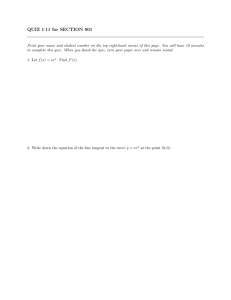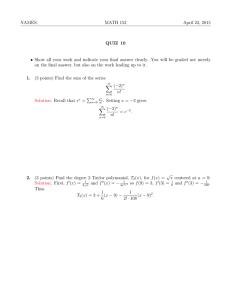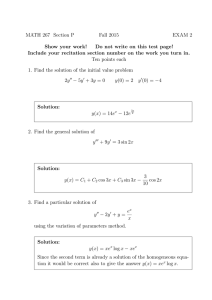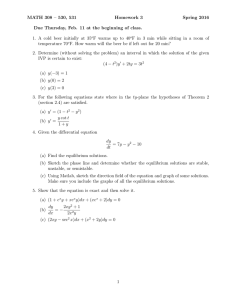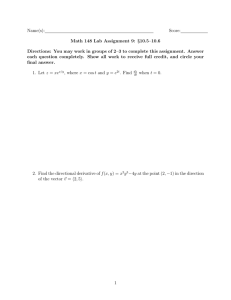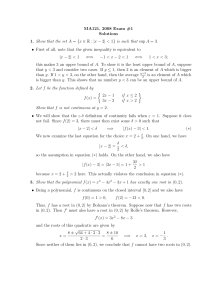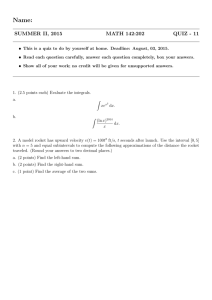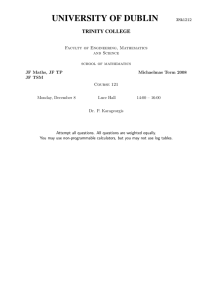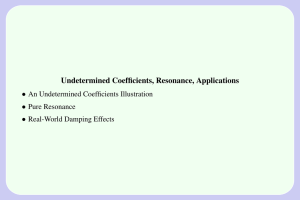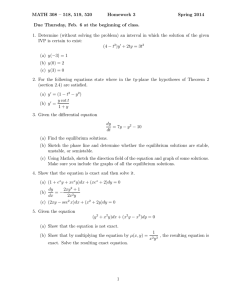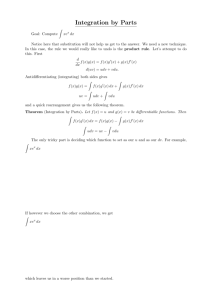. The differential equation y − An Illustration y = x + xe
advertisement
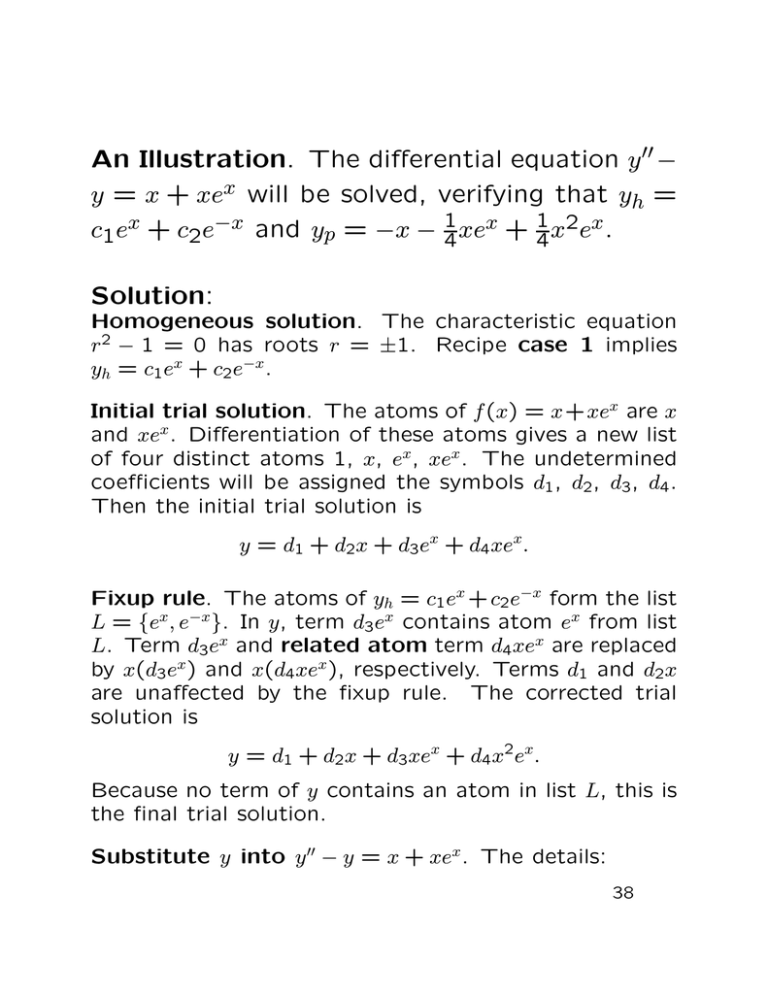
An Illustration. The differential equation y ′′ −
y = x + xex will be solved, verifying that yh =
x + 1 x2ex .
c1ex + c2e−x and yp = −x − 1
xe
4
4
Solution:
Homogeneous solution. The characteristic equation
r2 − 1 = 0 has roots r = ±1. Recipe case 1 implies
yh = c1 ex + c2 e−x .
Initial trial solution. The atoms of f (x) = x+xex are x
and xex . Differentiation of these atoms gives a new list
of four distinct atoms 1, x, ex, xex . The undetermined
coefficients will be assigned the symbols d1 , d2, d3 , d4 .
Then the initial trial solution is
y = d1 + d2x + d3ex + d4 xex .
Fixup rule. The atoms of yh = c1 ex + c2 e−x form the list
L = {ex , e−x }. In y, term d3 ex contains atom ex from list
L. Term d3ex and related atom term d4 xex are replaced
by x(d3 ex) and x(d4 xex ), respectively. Terms d1 and d2x
are unaffected by the fixup rule. The corrected trial
solution is
y = d1 + d2 x + d3 xex + d4 x2 ex.
Because no term of y contains an atom in list L, this is
the final trial solution.
Substitute y into y ′′ − y = x + xex . The details:
38
LHS = y ′′ − y
Left side of the
equation.
= [y1′′ − y1 ] + [y2′′ − y2]
Let y = y1 + y2 ,
y1 = d1 +d2 x, y2 =
d3 xex + d4x2 ex .
= [0 − y1 ]+
[2d3ex + 2d4ex + 4d4xex ]
Use y1′′ = 0 and
y2′′ = y2 + 2d3 ex +
2d4 ex + 4d4 xex .
= (−d1)1 + (−d2 )x+
(2d3 + 2d4 )ex + (4d4)xex
Collect on distinct
atoms.
Write out a 4 × 4 system. Because LHS = RHS and
RHS = x + xex , the last display gives the relation
(−d1 )1 + (−d2)x+
(2d3 + 2d4 )ex + (4d4 )xex = x + xex .
(2)
Equate coefficients of matching atoms left and right to
give the system of equations
−d1
−d2
2d3
+2d4
4d4
=
=
=
=
0,
1,
0,
1.
(3)
Atom matching effectively removes x and changes the
equation into a 4 × 4 linear system for symbols d1 , d2 ,
d3 , d4 .
The technique is independence. To explain, independence of atoms means that a linear combination of
atoms is uniquely represented, hence two such equal
representations must have matching coefficients. Relation (2) says that two linear combinations of the same
list of atoms are equal. Hence coefficients left and right
in (2) must match, which gives 4 × 4 system (3).
Solve the equations. The 4 × 4 system must always
have a unique solution. Equivalently, there are four
lead variables and zero free variables. Solving by backsubstitution gives d1 = 0, d2 = −1, d4 = 1/4, d3 = −1/4.
Report yp . The trial solution with determined coefficients d1 = 0, d2 = −1, d3 = −1/4, d4 = 1/4 becomes
the particular solution
yp = −x −
1 x
1
xe + x2 ex.
4
4
Report y = yh + yp . From above, yh = c1ex + c2 e−x and
yp = −x − 41 xex + 14 x2ex . Then y = yh + yp is given by
y = c1 ex + c2 e−x − x −
1 x
1
xe + x2 ex .
4
4
Answer check. Computer algebra system maple is used.
yh:=c1*exp(x)+c2*exp(-x);
yp:=-x-(1/4)*x*exp(x)+(1/4)*x^2*exp(x);
de:=diff(y(x),x,x)-y(x)=x+x*exp(x):
odetest(y(x)=yh+yp,de); # Success is a report of zero.
